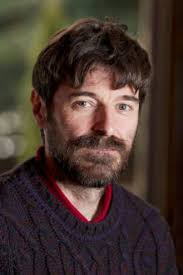An Introduction to Bayesian Mixture Models
A hacking day of Mathematics for Data Science at the Department of Mathematics
 |
|
Bio
Luigi Spezia has been working for Biomathematics & Statistics Scotland since February 2008. His research interests include Bayesian modelling in time and space; Bayesian model choice and variable selection; computational statistics; environmental and ecological statistics. His expertise is in developing temporal and spatial models with a latent Markov process, e.g. hidden Markov models and spatial hidden Markov models for the classification of the observations into a small set of homogeneous groups; Markov switching autoregressive models for the analysis of non-linear and non-normal time series. He applied his models to stochastic hydrology, image analysis, biogeography, animal movements, and, air quality control. His methodological research is currently developed under the module *Multivariate time series models for sensor and sensor network data*.Syllabus
Several times sets of independent and identically distributed observations cannot be described by a single distribution, but a combination of a small number of distributions belonging to the same parametric family is needed. This representation is obtained by allocating the observations to different subsets through a latent variable. All distribution are associated with a vector of probabilities which allows obtaining a finite mixture of the different distributions.
The lectures will present the basic concepts for dealing with Bayesian inference in mixture models, i.e. parameter estimation, model choice, and variable selection. Inference will be performed numerically, by using Markov Chain Monte Carlo methods.
Models related to mixtures will be also presented: hidden Markov models, Markov switching autoregressive models, and spatial hidden Markov models. All these models can be analysed as dynamic mixture models, whose latent variables are defined either as a temporal or a spatial process.
References
As an introductory reading:
- Frühwirth-Schnatter S (2006). Finite Mixture and Markov Switching Models. Springer, New York.
- Zucchini W, MacDonald IA, Langrock R (2016) Hidden Markov models for time series: an introduction using R, 2nd edn. Chapman & Hall/CRC Press, Boca Raton.
Schedule
- 29 May 2019, 09:30-11:30 @ A218 Povo 1
- 31 May 2019, 09:00-11:30 @ A224 Povo 1
Details
- Poster: PDF
- The participation is free. Please send an email to Prof. Claudio Agostinelli.
- For further information, please contact Prof. Claudio Agostinelli
- Venue: Polo Scientifico e Tecnologico F. Ferrari
- Language: English